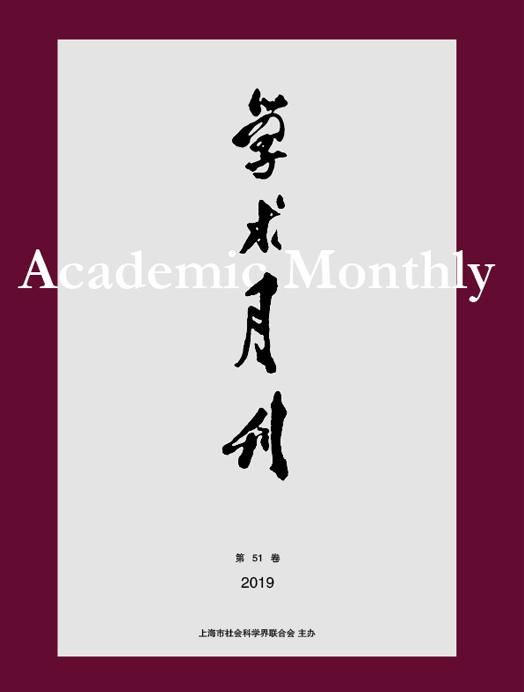Citation:
Wanhuai SUN. A New Expression of Position Interpreting Criminal Law[J]. Academic Monthly, 2020, 52(9): 95-109.

A New Expression of Position Interpreting Criminal Law
-
Abstract
The theory of interpreting criminal law stays at the scene of constructing a categorical monism, and mixes method, efficacy and standpoint in interpretation, thus resulting in a circulation of methodology. The historical interpretation in itself is a route of normative interpretation and its deep-going, and in fact it does not get rid of the method of objectivism or subjectivism. The so-called subjective or objective interpretation is rather a standpoint than a method, and two different norms must not be mixed together. If it is to adhere interpreting from the point of purpose, choosing objectivism is obviously beneficial to heighten the efficacy significance of position, and to avoiding a circulating proofing. The so-called systematic interpretation is an analogy in the process of containing and assimilating, and it is not a method of interpretation in itself, for it is only a step in every containing and assimilating. The interpreting form conforming to constitution is now still summed up as a method, but it ought to be transformed into a highest way of understanding the purpose of criminal law. Hence the order of interpreting criminal law must rely on the position of legal norms, avoid to become a sheer “consultation” without basic norms, and this is the foundation for interpreting position. In this way, the ladder is formed by conforming to norms, criminal codes and constitution of normative understanding.
-

-
References
-
Access
-
-
[1]
Pingxin LU
. On Interpretation of the Right to Equality: Structural Reason and Hermeneutic Analysis. Academic Monthly,
2022, 54(11): 107-120.
-
[2]
Lizhong XIE
. Interpretation, Fully Interpretation and Construction ofGeneral Theories. Academic Monthly,
2022, 54(5): 119-127.
-
[3]
Huiying FANG
. The Value Orientation and Standardized Construction of the Principle of Modesty in Criminal Law. Academic Monthly,
2022, 54(7): 117-125.
-
[4]
. . Academic Monthly,
2016, 48(02): 108-107.
-
[5]
Zhongjun LIN
. On Zhu Xi’s Re-establishment of Divination of Zhouyi and Explanation of Yi-ology. Academic Monthly,
2020, 52(9): 28-38.
-
[6]
Yanhong LIU
. To Promote the Development of the Discourse System of Criminal Law by Scientific Legislation. Academic Monthly,
2019, 51(4): 94-105.
-
[7]
. . Academic Monthly,
2017, 49(11): 79-115.
-
[8]
Qintong LI
. The Confucianization of Law and Its Explanation. Academic Monthly,
2020, 52(8): 157-169.
-
[9]
Jie ZHANG
. The “Excessive” Expansion of Financial Industry: The Fact and Interpretation from China. Academic Monthly,
2021, 53(10): 60-76.
-
[10]
MEI Jianhua
. Pluralist Approaches to Understand Consciousness and Explanatory Gap. Academic Monthly,
2023, 55(10): 25-35.
-
[11]
Weiping HE
. Hermeneutical Circle and Meno’s Paradox. Academic Monthly,
2019, 51(11): 15-23, 39.
-
[12]
,
. . Academic Monthly,
2016, 48(03): 21-29.
-
[13]
Zhengxu WANG
. Order and Prosperity: An Institutionalist Framework for First Questions of Politics. Academic Monthly,
2022, 54(3): 110-123.
-
[14]
Jun XUE
. Declaration of Behavior Ability in Chinese Law: Connotation of System and Reconstruction of Theory of Interpretation. Academic Monthly,
2019, 51(12): 95-105.
-
[15]
,
,
. . Academic Monthly,
2016, 48(11): 70-83.
-
[16]
. . Academic Monthly,
2018, 50(02): 103-113.
-
[17]
Yun CHEN
. Two Interpretation Orientations of the Debate on the Small and the Big in Zhuangzi and their Effective Ranges. Academic Monthly,
2019, 51(8): 13-26.
-
[18]
Lei LIU
. Constitutional Explanation of Chinese Land System: Issues, Disputes and Balance. Academic Monthly,
2019, 51(1): 105-114.
-
[19]
. . Academic Monthly,
2017, 49(02): 154-162.
-
[20]
. . Academic Monthly,
2017, 49(01): 86-91.
-
-



 沪公网安备 31010102003103号
沪公网安备 31010102003103号 DownLoad:
DownLoad: